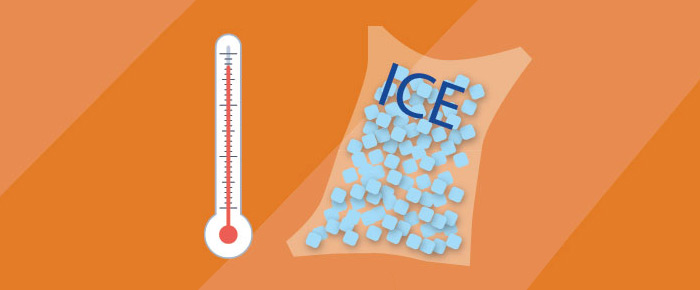Dangerous Myths About Exertional Heat Stroke

Media attention on death in sport and physical activity seems rampant. The top five causes of death in sport and physical activity include cardiac, brain injury, heat stroke, cervical injury, and exertional sickling. All five causes carry controversy in terms of their recognition, treatment, return to activity, and prevention; all of these are within the hands of the healthcare professional. Research within these areas is sometimes sparse due to the inability to contrive the situation within a lab (understandably). Other areas have significant amounts of research behind them, but aren’t believed by the practitioner because of old traditions passed down from clinician to clinician.
Myth 1: Victims Don’t Sweat
One such condition that seems to bear a large burden of myths is exertional heat stroke. The lay public, as well as clinicians, depend on the absence of sweating to recognize the condition. However, as I just mentioned, this is a misconception that has been purported for a long time. The vast majority of exertional heat stroke victims are profusely sweating. I think this notion may have come from classic heat stroke victims, which is a different entity than exertional heat stroke, and therefore not all of the signs and symptoms are the same.
It is devastating when I hear of an individual dying from exertional heat stroke because the responders thought it was heat exhaustion – simply because the person was still sweating. Additionally, it’s disheartening to see cases of exertional heat stroke death that could have been prevented if the correct treatment had been implemented. An exertional heat stroke case may not be completely preventable, but an exertional heat stroke death can be.
Myth 2: Ice Baths Are Harmful
So how can clinicians help prevent exertional heat stroke death? Cold water immersion is the best treatment for an exertional heat stroke patient, as supported by numerous research studies.1-5 If done promptly and correctly, it can almost always guarantee 100% survival.
The misconceptions that are attached to cold-water immersion have been keeping clinicians from using it, such as the belief that it will “heat the person up from the inside” or cause the “heart to go into shock”. I’ve even seen these misconceptions sensationalized on TV (i.e. the old show “ER” once chided a doctor for cooling a heat stroke victim based on these reasons).
In actuality, cold-water immersion can minimize organ damage and therefore prevent death from occurring if it is used within 30-60 minutes of the exertional heat stroke event. Immersing as much of the body as possible, making sure the water has plenty of ice to keep it cold, and circulating the water optimizes conductive and convective heat loss. The common misconceptions do not happen in an exertional heat stroke victim.
- Casa, D.J., et al., Cold water immersion: the gold standard for exertional heatstroke treatment. Exerc Sport Sci Rev, 2007. 35(3): p. 141-9.
- Gagnon, D., et al., Cold-water immersion and the treatment of hyperthermia: using 38.6 degrees C as a safe rectal temperature cooling limit. J Athl Train, 2010. 45(5): p. 439-44.
- McDermott, B.P., et al., Acute whole-body cooling for exercise-induced hyperthermia: a systematic review. J Athl Train, 2009. 44(1): p. 84-93.
- Proulx, C.I., M.B. Ducharme, and G.P. Kenny, Effect of water temperature on cooling efficiency during hyperthermia in humans. J Appl Physiol (1985), 2003. 94(4): p. 1317-23.
- Brodeur, V.B., S.R. Dennett, and L.S. Griffin, Exertional hyperthermia, ice baths, and emergency care at the Falmouth Road Race. J Emerg Nurs, 1989. 15(4): p. 304-12.










